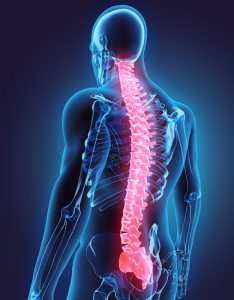Scoliosis
A sideways curvature of the spine observed in 3% of adolescents, Scoliosis typically presents itself in growing children. A parent may not know that the child has scoliosis and the child may not exhibit symptoms until puberty. Neurological conditions, birth defects, and athletic injuries to the spine may cause scoliosis but in most circumstances the cause remains unknown. In patients with minor scoliosis, a physician monitors it closely but typically does not intervene. In more severe cases, children may have to wear a brace or even undergo a surgery to normalize the curvature of their spine.
Symptoms of Scoliosis
Individuals suffering from scoliosis may have physical symptoms and symptoms related to appearance. Symptoms of Scoliosis include:
- Uneven shoulders
- Back pain
- Uneven waist
- On hip higher than the other
- One shoulder blade more prominent than the other
Children should receive a yearly physical from a pediatrician to monitor growth. During yearly physicals, pediatricians check the curvature of the spine to ensure the growing child does not have any abnormal curvature.
Surgical treatment of scoliosis
Scoliosis surgery falls into three categories; Growing systems, Fusionless, and Fusions.
In Growing Systems surgery, the surgeon aims to delay a fusion. Seen in younger patients, a surgeon anchors rods to the spine to maintain the spines curvature while the child continues to grow. The rods get lengthened every 6 to 12 months with another procedure, leading up to when the child reaches close to skeletal maturity. Once the child reaches skeletal maturity, the spinal surgeon performs a spinal fusion.
In Fusionless surgical treatment, the surgeon aims to slow down the growth on the outer side of the curve. To do this, the surgeon may place screws on the outer side of the curves and uses a cord to pull them and straighten the spine. Overtime, AOA Orthopedic Specialist surgeons suggest this may slow the growth of the curve and allow the spine to grow straight.
In a Spinal Fusion, a surgeon fuses two or more vertebrae together. In a Spinal Fusion procedure, the fused bones grow together forming solid bone that does not move. A tried and true surgery in spine surgery, spinal surgeons report that the long term  safety and success outweighs the drawback of less mobility of the spine.
safety and success outweighs the drawback of less mobility of the spine.
Following any spinal surgery, the treating physician prescribes a physical therapy protocol for the patient to follow.
Click here to view a list of accepted insurances at AOA Orthopedic Specialists. To find a clinic near you click here.

